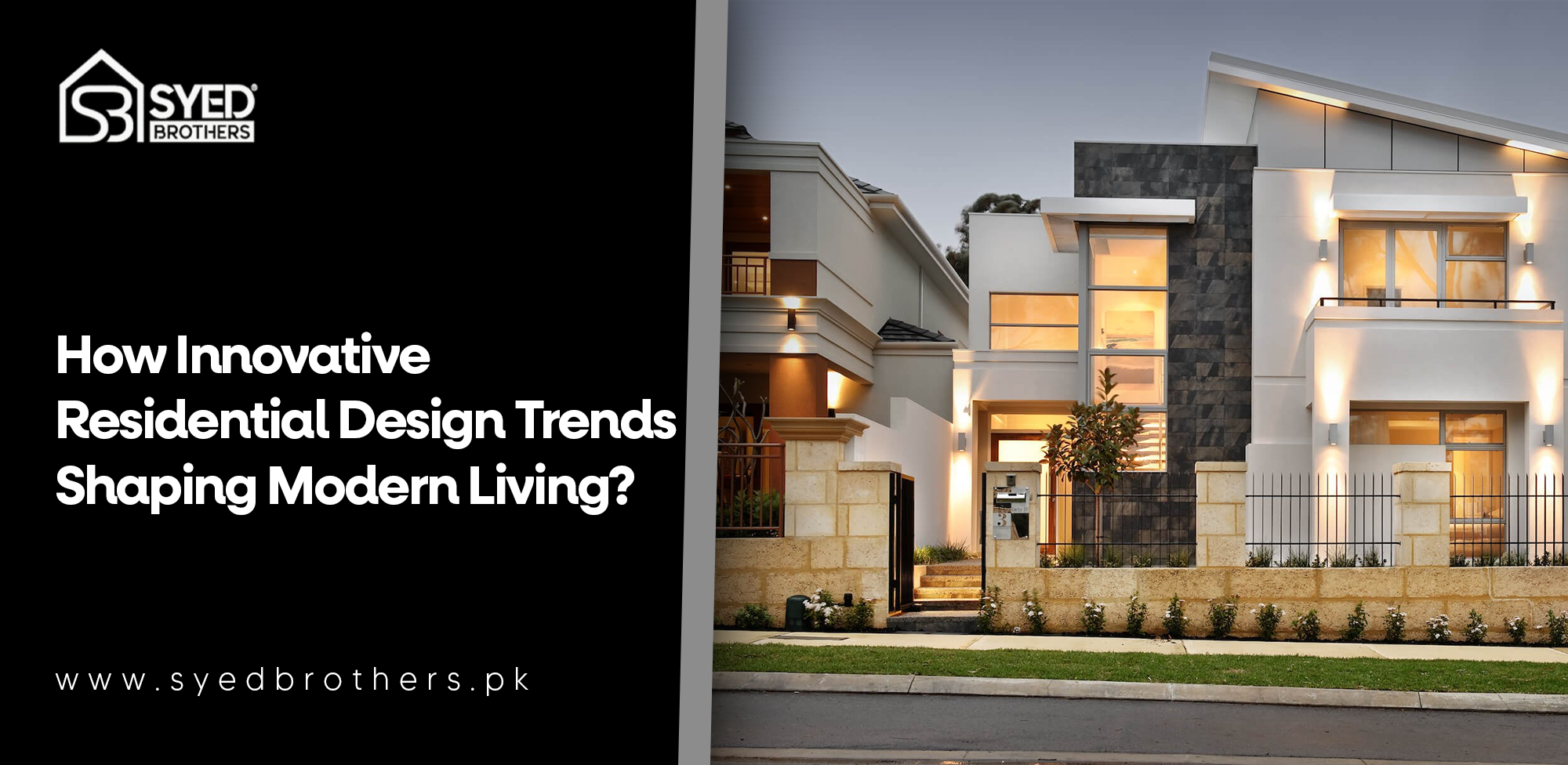
The home design and architecture industry is undergoing rapid transformation day by day. With the introduction of smart technology, stylish aesthetics, and sustainability, people are looking for residential design solutions that are a mixture of all comforts. The innovative residential design trends are developing on the basis of these inventions. From energy-efficient features to multi-functional spaces, these trends are addressing the demands for homes that are both modern and functional. This article provides a complete guide about how innovative residential design trends are staging our homes and living styles for the future.
Role of Innovative Residential Design Trends in Shaping Modern Living:
Improving Sustainability:
These designs are highly energy saving and adopt sustainable resources to reduce their impact on the atmosphere and quality of life.
Energy Efficiency: The introduction of smart thermostats makes house design islamabad more energy saving. This design also involves the use of renewable resources that lower energy manipulation and carbon footprints.
Sustainable Materials: Sustainable materials reduce wastage products. So these design prefer to employ reclaimed wood, bamboo, and recycled products.
Water Conservation: Many modern house designs are equipped with the best water transport systems. Advanced smart techniques, such as low-flow plumbing, automatic faucets, and drought-resistant systems, lower water consumption. These features make the sustainable design trend perfect for water-scarce areas.
Increasing Comfort with Wellness-Oriented Spaces:
Health and wellness-oriented residential design trends are getting popular. Homes are designed to create stunning and inviting spaces that protect both physical and mental health.
Natural Light and Ventilation: For natural ventilation, large windows are installed. Skylights and open spaces are preferred to maintain natural light flow in the house. It has a positive impact on mood and also reduces the employment of artificial lights.
Biophilic Designs: These designs are the perfect choice for nature lovers. These designs employ green walls, and other natural materials to make them more elegant. This plays a crucial role in lowering stress and improving the focus and health of residents.
Moreover, most innovative residential designs also include dedicated spaces for fitness. They have home gyms and wellness areas for physical growth and mental relaxation.
Facilitating Technological Integration:
Home technologies are also transforming the residential design trends. It gives homeowners the capability to control various elements of their living environment with just a single touch or through voice command.
Automation: Smart locks, thermostats, and lights have become common. These devices are controlled automatically through a remote or voice company by Alexa. They play a crucial role in energy management and convenience.
Integrated Systems: From climate control to entertainment and security, everything is managed through multi-functional smart systems. It creates a responsive living atmosphere for residents.
Fostering Flexibility:
Innovative residential design trends focus on promoting flexibility. They allow people to adjust their house design based on their personal preferences, unforeseen circumstances, and multiple life stages. So that homes remain functional and relevant to upcoming changes.
Multi-use Spaces: Open floor designs offer great flexibility for different activities. Open layouts allow residents to repurpose their rooms based on their needs. You can change your bedrooms into offices with this design.
Modern furniture designs are more versatile. You can improve your space by using a variety of furniture.
Hidden Storage Solutions: Designers are embodying various storage solutions in furniture. It makes spaces uncluttered, free, and neat.
Fostering Connection to the Outdoors:
Most modern and innovative residential designs emphasize connecting outdoor areas with indoor areas. It develops a harmonious atmosphere that encourages social interaction, relaxation, and a deeper connection to nature.
Green Spaces: Urban design involves green spaces and green roofs to tackle heat island effects in cities. It helps residents live a fresh and healthy lifestyle like villages with all the facilities of cities.
Outdoor Living Areas: Modern residential designs include patios, balconies, and decks with outdoor kitchens, dining areas, and lounges. These areas allow residents to have more space for entertaining guests and spending more time in a natural atmosphere.
Personalization and Customization:
Everyone wants to have a house that reflects his personality, taste, and lifestyle. Innovative residential design trends allow owners to create a space that matches their individuality and preferences. They can select those materials, layouts, and finishes that resonate with their tastes.
Tailored Design: Custom designs offer homeowners custom-designed spaces, whether it's personalization cabinetry or unique floor plans. They can also add customized lights for a more personalized effect. These lighting can dramatically increase the appeal of both the design and space, whether it's a statement in the dining room, lighting in the living room, or under-cabinet lighting in the kitchen.
Craftsmanship and Artisanal: Most home designs also incorporate artisan-crafted features. It also represents the tradition and culture of Pakistan, along with adding uniqueness to house frames.
Minimalism and Decluttering:
Minimalism and decluttering are also powerful residential design trends. They focus on creating stunning and serene places by reducing physical possessions. Minimalist design principles and decluttering practices offer homeowners to cultivate their environment and maintain style and comfort. From innovative storage solutions to the selection of color palettes, everything is done according to decluttering principles.
Conclusion
Residential design trends are fundamentally evolving the modern living style. By combining sustainability, adaptability, and technology, they are transforming the home designing industry. They are helping people create space that not only meets their personality and lifestyle, but also gives a unique and innovative appeal. They are exceeding people's expectations and also reshaping their way of spending their lives. They are contributing to a better quality of life and a sustainable future for everyone.